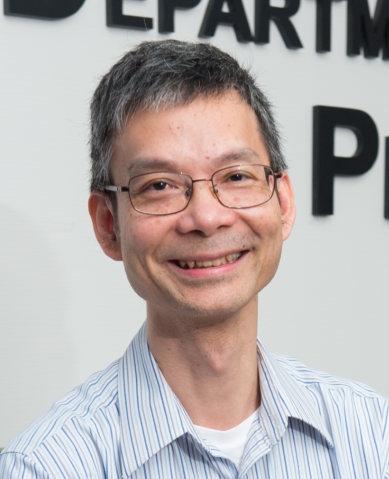
Prof. Shu Kong SO

Contact Information
Tel: 3411 7038
Email: skso@hkbu.edu.hk
Acting Head and Professor, Department of Physics
- SMART SOCIETY
Professor Shu K SO obtained his bachelor degree (B.A., summa cum laude) from Hamilton College, New York and PhD in Physics from Cornell University. In Cornell, he did research on surface physics and chemistry of small molecules on metal and semiconductor surfaces. He was a postdoctoral fellow in the Chemistry Department of the University of Toronto where he used scanning tunneling microscope to study surface photochemistry. In 1992, he joined the Department of Physics, Hong Kong Baptist University. He is now the Acting Head and a Professor of Physics. His major research interest is in the physics and the chemistry of thin film materials including heat transfer, charge transport, and defect study of organic films, fabrication of organic solar cells and thin film transistors, surface and optical spectroscopies of materials, and pulsed laser deposition. He has made notable contributions to the carrier transport study of organic and polymeric thin films for organic light emitting diodes (OLEDs) and organic photovoltaic (OPV) applications, and the study of defects in organic semiconductors and perovskite materials. His recent interests are in the niche applications of OPV cells in, e.g., for indoor light harvesting.
Project Highlights



